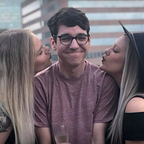Lower Fidelity, Higher Vision
You know how in space, objects alternate between being extremely hot and extremely cold (depending on which side faces the sun)? This is what it feels like right now in Pittsburgh. Please, please stay a consistent 70+ from now on… it’s already mid-April.
Moving on from our productive design session last week, we further discussed and iterated on our assumptions and principles, which lead to creating multiple dimensions to measure our ideas.
We then went through our storyboards, discussed the feasibility and impact of each idea, and listed promising features that we could draw inspiration from in future designs. We began to narrow our scope, and decided to focus on iterating the following three scenarios:
Authoring phase — Engineer references database of past WADs to write a new WAD
Execution phase — Tech sends feedback on WAD execution
Alteration phase — Tech talks to engineer on POV HUD
We narrowed our focus based on impact and feasibility. Through our interviews, we uncovered a myriad of fixable issues in each of these three phases (aka: less anchored to the iron chains of bureaucracy).
As we near the end of Spring term, we have started to make requests to NASA for actual WAD data. One barrier in our decision making process is contingent on WAD success metrics. What makes a good WAD vs a bad WAD? For example, is the number of WAD revisions actually a commonplace issue, or just something we uncovered from our interview?
On Tuesday night, the quintessential crew (aka us) convened to share our screens. We discussed what each of us had come up with, and highlighted the similarities and features our designs shared.
Later this week, we will be consolidating our low-fi prototypes into high level concepts, as well as preparing for our final Spring term deliverables.
Team C-137, out!
